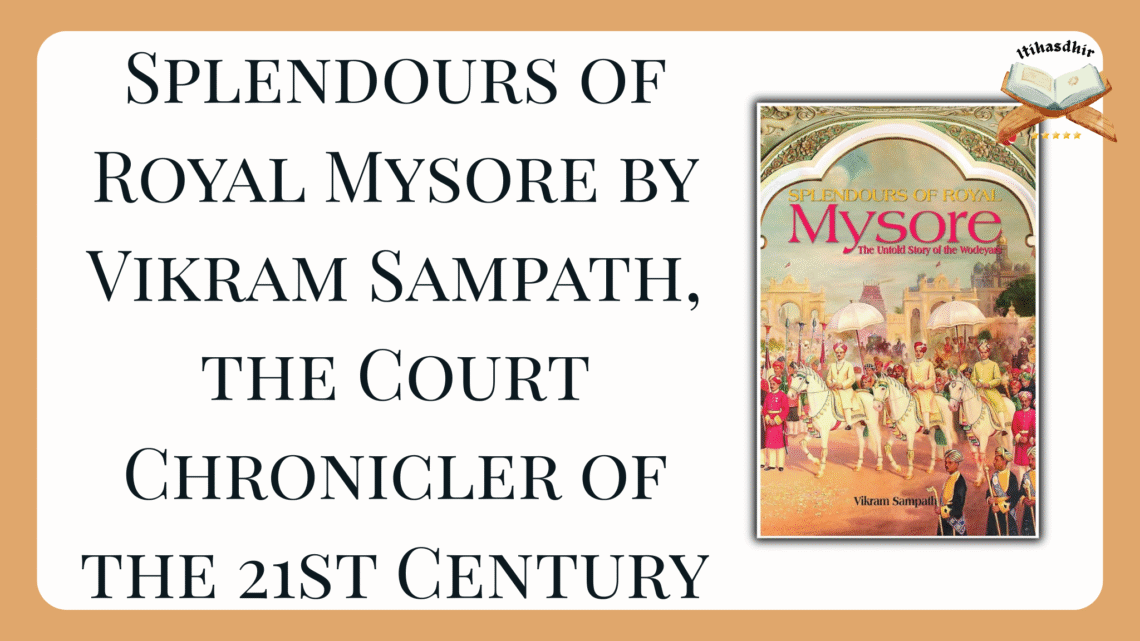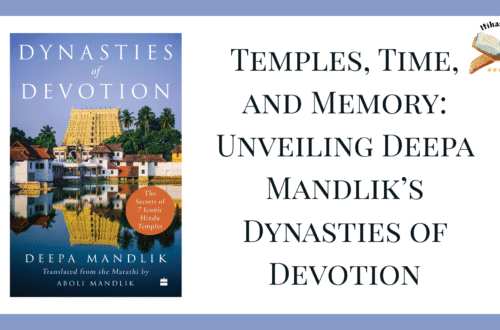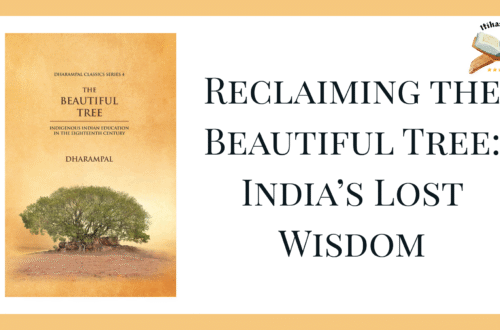
Splendours of Royal Mysore by Vikram Sampath, the Court Chronicler of the 21st Century
When royalty needed a biographer six centuries later, Vikram Sampath rose gallantly to the occasion.
Vikram Sampath, for those who don’t know, is not your average historian droning on about “subaltern agency” in a beige lecture hall. No—he is a historian with flair, drama, and the distinct sense that he may have missed his calling as a royal archivist in a parallel 18th-century Mysore. With a background in engineering, finance, and Carnatic music (because why not?), Sampath took it upon himself to exhume the largely neglected Wodeyar dynasty and give them the full ceremonial welcome history denied them.
He does not merely write history; he resurrects it, applies sandalwood paste, and presents it with a veena recital in the background.
A Palatial Undertaking
Splendours of Royal Mysore: The Untold Story of the Wodeyars is a mammoth biography of the Mysore royal family, tracing their lineage from obscure provincial chiefs under the Vijayanagara Empire to one of the most administratively advanced princely states under the British Raj. Over the course of 600+ pages, the Wodeyars are transformed from a footnote in Indian history textbooks into full-blooded protagonists of a grand civilisational tale.
Sampath weaves a richly embroidered tapestry of statecraft, music, architecture, courtly rituals, and of course, the odd political conspiracy—because what is royalty without the occasional poisoning attempt?
What Deserves Applause (Standing, Naturally)
The book rests on an enormous bedrock of primary research. Royal records, personal letters, old photographs, and forgotten manuscripts—Sampath has pillaged every archive available, and it shows. His attention to detail is borderline obsessive, though never dull. One gets the sense that if a Wodeyar sneezed in 1754, Sampath has documented it.
This is not a dusty academic monograph. Sampath has a novelist’s sense of pacing and a bard’s flair for colour. The battle scenes are vivid, the court intrigues deliciously detailed, and the cultural sections—on music, painting, and urban planning—are given the respect they deserve, without being reduced to quaint curiosities.
There is no apologetic tone here, no embarrassed footnotes about how colonial modernity saved India from itself. Mysore’s kings are presented as competent, cultured, and—heaven forbid—civilisationally rooted. This alone is a refreshing departure from the standard textbook fare that can barely hide its contempt for anything pre-1947 and not European.
What Grates (Gently, Like a Polished Sabre)
The admiration for the Wodeyars verges on devotional at times. One suspects that if Vikram Sampath could have nominated Krishnaraja Wodeyar IV for Bharat Ratna posthumously, he would have organised a petition. While the reverence is sincere, it does occasionally compromise critical distance.
The latter sections of the book, especially in the 19th and 20th centuries, read increasingly like excerpts from a bureaucratic audit. While informative, the narrative begins to drag under the weight of detailed accounts of public works, budgets, and committee proceedings. Enthusiasts of irrigation history will rejoice. The rest will soldier on.
Anti-Marxist, Pro-Mysore, Decolonised by Design
Sampath writes with an unmistakable disdain for the stale, Delhi-centric, Nehruvian-Marxist historiography that has long dominated Indian academic discourse. In its place, he offers something radical: an Indian dynasty that was competent, ethical, devout, and effective—even under colonial pressure. The horror.
There is no apology in this book. No tortured discourse about ‘privilege’ or ‘feudal oppression’. Just an elegant, layered presentation of a Hindu royal house that governed with a vision and moral clarity that would put many modern states to shame.
It’s history—unfiltered, unsanitised, and uncolonised.
A Regal Work, Minor Flaws and All
Splendours of Royal Mysore is part biography, part cultural epic, part rebuttal to every NCERT history book that ever made you think Indian kings only played veena while the Mughals did the real ruling. It is deeply researched, artfully written, and clearly the product of a mind that respects its subject far more than modern academia typically allows.
If you want to understand how an Indic dynasty preserved culture, promoted education, modernised infrastructure, and still found time for Dasara festivities, this is your book.
Just make sure you have a strong wrist—it’s quite the royal tome.
It is a minor miracle. A literary cenotaph to a dynasty that, until now, received polite footnotes in history textbooks.
If you love India, admire good governance, or just miss the days when kings knew their ragas, this is your book.
Just remember to bow slightly before opening it.

Aditi Joshi founded Itihasdhir in 2023. She facilitates discussions on Indian history and the influence of historians. Currently, Aditi is a contributor of the VHPA initiative Stop HinduDvesha and serves as an Editor at Garuda Prakashan. A history graduate and folklore enthusiast, she is also an artist and translator, blending creativity and research to illuminate India’s cultural richness.





